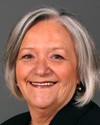Thank you very much, Mr. Chair.
I am pleased to have this opportunity to present the preliminary results of our study on second-language learning opportunities in Canada's universities. This issue has long held great interest for me, and I believe that it is an important question for Canadians.
I am accompanied today by Carsten Quell, Director, Policy and Research; Mylène Thériault, Team Leader, Policy and Research, and Mark Goldenberg, the consultant who is working closely with members of my office on this study.
While we have extensive knowledge and information about second-language learning at the elementary and secondary levels, I believe this additional piece is essential in order for Canadians to have a complete continuum in second-language learning. In fact, one of the recommendations included in my annual report is that the Minister of Canadian Heritage and Official Languages quickly implement the commitments announced in the “Roadmap for Canada's Linguistic Duality” to support second-language learning by bringing together all partners involved in this issue.
Knowledge of our two official languages is important for our young people's development, especially considering increased international competition and the global knowledge economy. Knowledge of both English and French by more Canadians is also important as part of Canada's commitment to linguistic duality and for the effective functioning of our country in many different sectors. And in the context of the renewal of the public service, it's important for a national government to have access to a larger pool of bilingual recruits.
Today, I have provided you with the preliminary findings of this major study that we are undertaking. As part of our study, an extensive survey was conducted of second-language programs and courses currently offered at Canada's universities.
Access to second-language courses at universities is generally good. However, opportunities for students to study in their second language are quite limited.
We found that there is generally good access to "regular" programs and courses for students to learn their second language, but that there are relatively few opportunities to do so more intensively, such as taking academic subjects taught in the second language. Only a very limited number of courses and a very narrow range of subjects are being offered in the second language.
Very few universities have any second-language policies or requirements. Those that exist are rather minimal and usually apply to only a few courses in a language other than French in Quebec and other than English throughout the rest of Canada.
There is little formal collaboration between English- and French-language institutions in Canada that would give students greater second-language exposure. While many Canadian universities offer or facilitate exchange opportunities with other countries, exchange opportunities between institutions within Canada are quite limited.
One finding that might interest you is that only a handful of public administration programs in Canada offer courses in the other language, have language requirements, or offer exchange-type activities.
What works? How can we improve second-language learning in university?
Students said that the professor is the most important factor and that smaller classes provide for greater interaction in the second language. They find that content-rich second-language courses—including more cultural and targeted subject-matter content—makes the experience more stimulating. They believe that they would benefit from taking a least some subject-matter courses in the second language to deepen their knowledge of it.
Language-learning experts agree on the effectiveness of content-based learning, and that a range of learning supports has to be available and tailored to the particular situations and needs of institutions and students. They told us that recognition and accreditation are important motivators for students, and that language-learning opportunities should be provided early at the university level.
Professors and university administrators involved in second-language programs say that leadership and commitment from the top are critical and that the university has to signal that it values second-language learning. This requires planning, coordinating, organizing, and negotiating with other faculties and institutions. It also means additional costs to universities and faculties, costs that are not adequately recognized by the usual per capita funding formula. And students, professors, administrators, experts, and government officials all agree that real-life opportunities to use and practise the second language, exchanges, and other opportunities for interaction with people who speak the other language are vital. You cannot fully learn another language simply by taking a course.
Finally, we know of some interesting initiatives and good practices out there, as well as possible models and approaches that are effective and that can point the way. These include the expertise and experience of bilingual institutions like the University of Ottawa, and York's Glendon College; the efforts by Campus Saint-Jean and the Collège universitaire Saint-Boniface to attract English-language students and offer an immersion-type learning experience; initiatives to offer second-language courses tailored to specific disciplines such as business English at the Université de Montréal and French for business or law at the University of Western Ontario; Simon Fraser University's Office of Francophone and Francophile Affairs; Memorial University's one-semester immersion program in Saint-Pierre-et-Miquelon; and others.
So where do we go from here?
We know that more and better second-language learning opportunities at university are important—for young people and for Canada. We know that opportunities for intensive exposure to the second language are limited. We know that there's a growing need and demand. And we know what works to make students more proficient.
Our study points to a number of potential broad directions for intervention: we need to offer more intensive second-language learning opportunities; we need to make better use of the potential of institutions that teach in the other official language, through collaboration and partnerships and the use of technology; we need to offer students more exchanges and real life opportunities to use their second language in Canada; and we need to look again at second-language policies and requirements and how they can be used to improve second-language learning at university.
The final report, including recommendations, will be available in the fall. Moving forward in these and other areas will require the commitment and collaboration of all interested parties--universities, educational organizations, government, and others.
I look forward to answering any questions you may have.
Thank you very much.





